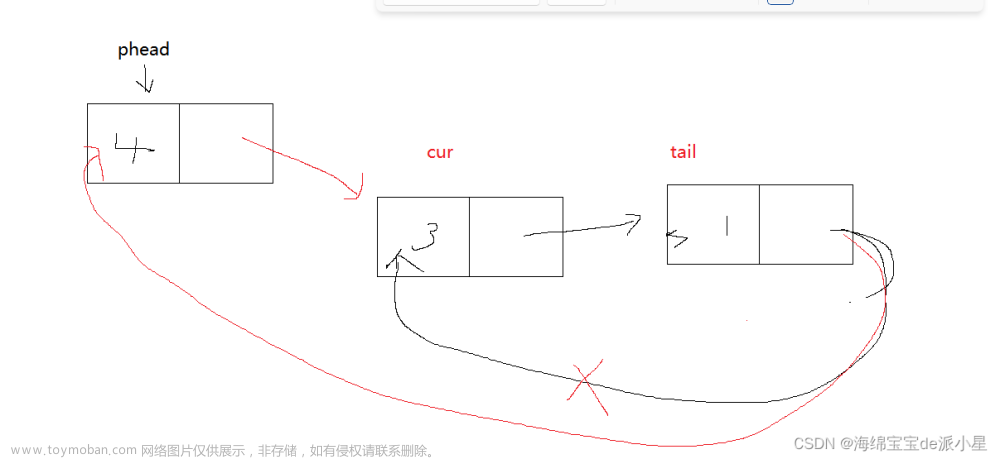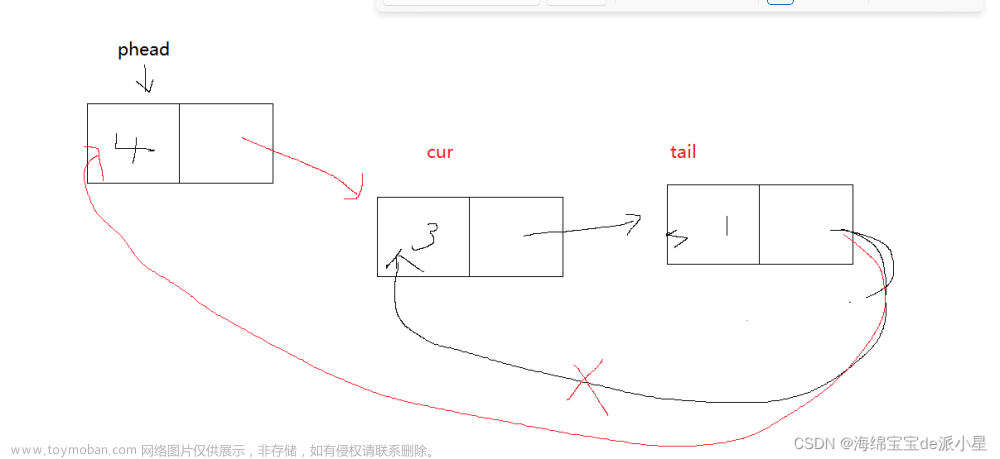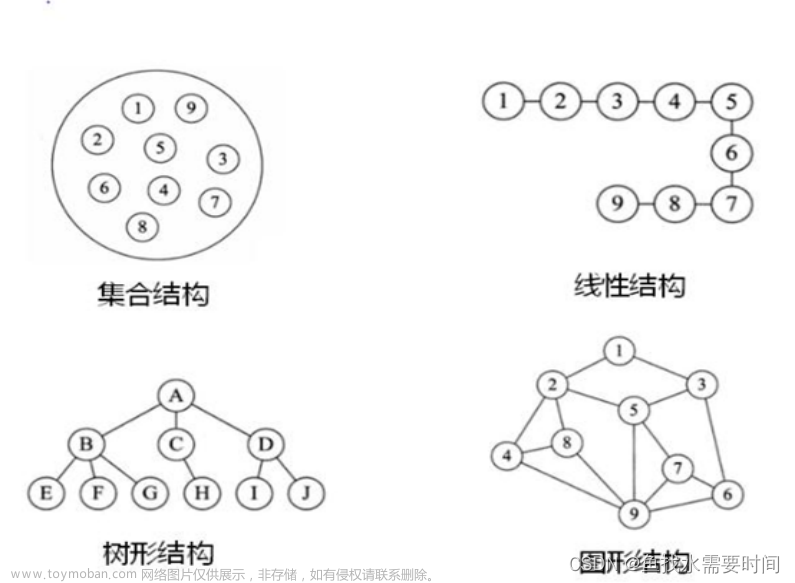实验1.1
8576 顺序线性表的基本操作
时间限制:1000MS 代码长度限制:10KB
提交次数:9027 通过次数:2456
题型: 编程题 语言: G++;GCC
Description
编写算法,创建初始化容量为LIST_INIT_SIZE的顺序表T,并实现插入、删除、遍历操作。本题目给出部分代码,请补全内容。
#include<stdio.h>
#include<malloc.h>
#define OK 1
#define ERROR 0
#define LIST_INIT_SIZE 100
#define LISTINCREMENT 10
#define ElemType int
typedef struct
{
int *elem;
int length;
int listsize;
}SqList;
int InitList_Sq(SqList &L)
{
// 算法2.3,构造一个空的线性表L,该线性表预定义大小为LIST_INIT_SIZE
// 请补全代码
}
int Load_Sq(SqList &L)
{
// 输出顺序表中的所有元素
int i;
if(_________________________) printf("The List is empty!"); // 请填空
else
{
printf("The List is: ");
for(_________________________) printf("%d ",_________________________); // 请填空
}
printf("\n");
return OK;
}
int ListInsert_Sq(SqList &L,int i,int e)
{
// 算法2.4,在顺序线性表L中第i个位置之前插入新的元素e
// i的合法值为1≤i≤L.length +1
// 请补全代码
}
int ListDelete_Sq(SqList &L,int i, int &e)
{
// 算法2.5,在顺序线性表L中删除第i个位置的元素,并用e返回其值
// i的合法值为1≤i≤L.length
// 请补全代码
}
int main()
{
SqList T;
int a, i;
ElemType e, x;
if(_________________________) // 判断顺序表是否创建成功
{
printf("A Sequence List Has Created.\n");
}
while(1)
{
printf("1:Insert element\n2:Delete element\n3:Load all elements\n0:Exit\nPlease choose:\n");
scanf("%d",&a);
switch(a)
{
case 1: scanf("%d%d",&i,&x);
if(_________________________) printf("Insert Error!\n"); // 执行插入函数,根据返回值判断i值是否合法
else printf("The Element %d is Successfully Inserted!\n", x);
break;
case 2: scanf("%d",&i);
if(_________________________) printf("Delete Error!\n"); // 执行删除函数,根据返回值判断i值是否合法
else printf("The Element %d is Successfully Deleted!\n", e);
break;
case 3: Load_Sq(T);
break;
case 0: return 1;
}
}
}
输入格式
测试样例格式说明: 根据菜单操作: 1、输入1,表示要实现插入操作,紧跟着要输入插入的位置和元素,用空格分开 2、输入2,表示要实现删除操作,紧跟着要输入删除的位置 3、输入3,表示要输出顺序表的所有元素 4、输入0,表示程序结束
输入样例
1 1 2 1 1 3 2 1 3 0
输出样例
A Sequence List Has Created. 1:Insert element 2:Delete element 3:Load all elements 0:Exit Please choose: The Element 2 is Successfully Inserted! 1:Insert element 2:Delete element 3:Load all elements 0:Exit Please choose: The Element 3 is Successfully Inserted! 1:Insert element 2:Delete element 3:Load all elements 0:Exit Please choose: The Element 3 is Successfully Deleted! 1:Insert element 2:Delete element 3:Load all elements 0:Exit Please choose: The List is: 2 1:Insert element 2:Delete element 3:Load all elements 0:Exit Please choose:
#include<stdio.h>
#include<malloc.h>
#define OK 1
#define ERROR 0
#define LIST_INIT_SIZE 100
#define LISTINCREMENT 10
#define ElemType int
typedef struct
{
int *elem;
int length;
int listsize;
}SqList;
int InitList_Sq(SqList &L)
{
L.elem=new ElemType[LIST_INIT_SIZE];
if(!L.elem)return ERROR;
L.length=0;
return OK;
// 算法2.3,构造一个空的线性表L,该线性表预定义大小为LIST_INIT_SIZE
// 请补全代码
}
int Load_Sq(SqList &L)
{
// 输出顺序表中的所有元素
int i;
if(L.length==0) printf("The List is empty!"); // 请填空
else
{
printf("The List is: ");
for(i=0;i<L.length;i++) printf("%d ",L.elem[i]); // 请填空
}
printf("\n");
return OK;
}
int ListInsert_Sq(SqList &L,int i,int e)
{
if(i<1||i>L.length+1)return ERROR;
if(L.length==LIST_INIT_SIZE) return ERROR;
for(int j=L.length-1;j>=i-1;j--)
{
L.elem[j+1]=L.elem[j];
}
L.elem[i-1]=e;
L.length++;
return OK;
// 算法2.4,在顺序线性表L中第i个位置之前插入新的元素e
// i的合法值为1≤i≤L.length +1
// 请补全代码
}
int ListDelete_Sq(SqList &L,int i, int &e)
{
if(i<1||i>L.length)return ERROR;
e=L.elem[i-1];
for(int j=i;j<=L.length-1;j++)
{
L.elem[j-1]=L.elem[j];
}
L.length--;
return e;
// 算法2.5,在顺序线性表L中删除第i个位置的元素,并用e返回其值
// i的合法值为1≤i≤L.length
// 请补全代码
}
int main()
{
SqList T;
int a, i;
ElemType e, x;
if(InitList_Sq(T)) // 判断顺序表是否创建成功
{
printf("A Sequence List Has Created.\n");
}
while(1)
{
printf("1:Insert element\n2:Delete element\n3:Load all elements\n0:Exit\nPlease choose:\n");
scanf("%d",&a);
switch(a)
{
case 1: scanf("%d%d",&i,&x);
if(ListInsert_Sq(T,i,x)==ERROR) printf("Insert Error!\n"); // 执行插入函数,根据返回值判断i值是否合法
else printf("The Element %d is Successfully Inserted!\n", x);
break;
case 2: scanf("%d",&i);
if(ListDelete_Sq(T,i,e)==ERROR) printf("Delete Error!\n"); // 执行删除函数,根据返回值判断i值是否合法
else printf("The Element %d is Successfully Deleted!\n", e);
break;
case 3: Load_Sq(T);
break;
case 0: return 1;
}
}
}
实验1.2
8577 合并顺序表
时间限制:1000MS 代码长度限制:10KB
提交次数:5339 通过次数:2251
题型: 编程题 语言: G++
Description
若线性表中数据元素相互之间可以比较,且数据元素在表中按值递增或递减,则称该表为有序表。 编写算法,将两个非递减有序顺序表A和B合并成一个新的非递减有序顺序表C。
输入格式
第一行:顺序表A的元素个数 第二行:顺序表A的各元素(非递减),用空格分开 第三行:顺序表B的元素个数 第四行:顺序表B的各元素(非递减),用空格分开
输出格式
第一行:顺序表A的元素列表 第二行:顺序表B的元素列表 第三行:合并后顺序表C的元素列表
输入样例
5 1 3 5 7 9 5 2 4 6 8 10
输出样例
List A:1 3 5 7 9 List B:2 4 6 8 10 List C:1 2 3 4 5 6 7 8 9 10
提示
输出时注意大小写和标点。
#include <iostream>
#include <algorithm>
using namespace std;
int main()
{
int a[105]={0},i,len1=0,len2=0;
cin>>len1; //输入两个顺序表
for(i=1;i<=len1;i++)
cin>>a[i];
cin>>len2;
for(i=len1+1;i<=len1+len2;i++)//len1+len2就是a数组的总长度
cin>>a[i];
cout<<"List A:"; //输出两个顺序表
for(i=1;i<=len1;i++)
cout<<a[i]<<" ";
cout<<endl;
cout<<"List B:";
for(i=len1+1;i<=len1+len2;i++)
cout<<a[i]<<" ";
cout<<endl;
sort(a+1,a+1+len1+len2);
cout<<"List C:";
for(i=1;i<=len1+len2;i++)
printf("%d ",a[i]);
return 0;
}
实验1.3
8578 顺序表逆置
时间限制:1000MS 代码长度限制:10KB
提交次数:3660 通过次数:2149
题型: 编程题 语言: G++;GCC
Description
顺序表的基本操作代码如下:
#include<stdio.h>
#include<malloc.h>
#define OK 1
#define ERROR 0
#define LIST_INIT_SIZE 100
#define LISTINCREMENT 10
#define ElemType int
typedef int Status;
typedef struct
{
int *elem;
int length;
int listsize;
}SqList;
Status InitList_Sq(SqList &L)
{ // 算法2.3
// 构造一个空的线性表L。
L.elem = (ElemType *)malloc(LIST_INIT_SIZE*sizeof(ElemType));
if (!L.elem) return OK; // 存储分配失败
L.length = 0; // 空表长度为0
L.listsize = LIST_INIT_SIZE; // 初始存储容量
return OK;
} // InitList_Sq
Status ListInsert_Sq(SqList &L, int i, ElemType e)
{ // 算法2.4
// 在顺序线性表L的第i个元素之前插入新的元素e,
// i的合法值为1≤i≤ListLength_Sq(L)+1
ElemType *p;
if (i < 1 || i > L.length+1) return ERROR; // i值不合法
if (L.length >= L.listsize) { // 当前存储空间已满,增加容量
ElemType *newbase = (ElemType *)realloc(L.elem,
(L.listsize+LISTINCREMENT)*sizeof (ElemType));
if (!newbase) return ERROR; // 存储分配失败
L.elem = newbase; // 新基址
L.listsize += LISTINCREMENT; // 增加存储容量
}
ElemType *q = &(L.elem[i-1]); // q为插入位置
for (p = &(L.elem[L.length-1]); p>=q; --p) *(p+1) = *p;
// 插入位置及之后的元素右移
*q = e; // 插入e
++L.length; // 表长增1
return OK;
} // ListInsert_Sq
Status ListDelete_Sq(SqList &L, int i, ElemType &e)
{ // 算法2.5
// 在顺序线性表L中删除第i个元素,并用e返回其值。
// i的合法值为1≤i≤ListLength_Sq(L)。
ElemType *p, *q;
if (i<1 || i>L.length) return ERROR; // i值不合法
p = &(L.elem[i-1]); // p为被删除元素的位置
e = *p; // 被删除元素的值赋给e
q = L.elem+L.length-1; // 表尾元素的位置
for (++p; p<=q; ++p) *(p-1) = *p; // 被删除元素之后的元素左移
--L.length; // 表长减1
return OK;
} // ListDelete_Sq
设有一顺序表A=(a0,a1,..., ai,...an-1),其逆顺序表定义为A'=( an-1,..., ai,...,a1, a0)。设计一个算法,将顺序表逆置,要求顺序表仍占用原顺序表的空间。
输入格式
第一行:输入顺序表的元素个数 第二行:输入顺序表的各元素,用空格分开
输出格式
第一行:逆置前的顺序表元素列表 第二行:逆置后的顺序表元素列表
输入样例
10 1 2 3 4 5 6 7 8 9 10
输出样例
The List is:1 2 3 4 5 6 7 8 9 10 The turned List is:10 9 8 7 6 5 4 3 2 1
#include <stdio.h>
#include <stdlib.h>
int main()
{
int i,t,n;
scanf("%d",&n);
int a[n];
for(i=1;i<=n;i++)
{
scanf("%d",&a[i]);
}
printf("The List is:");
for(i=1;i<=n;i++)
{
printf("%d ",a[i]);
}
printf("\n");
printf("The turned List is:");
for(i=n;i>=1;i--)
{
printf("%d ",a[i]);
}
return 0;
}实验1.4
8579 链式线性表的基本操作
时间限制:1000MS 代码长度限制:10KB
提交次数:5567 通过次数:2176
题型: 编程题 语言: G++;GCC
Description
编写算法,创建一个含有n个元素的带头结点的单链表L并实现插入、删除、遍历操作。本题目提供部分代码,请补全内容。
#include<stdio.h>
#include<malloc.h>
#define ERROR 0
#define OK 1
#define ElemType int
typedef struct LNode
{
int data;
struct LNode *next;
}LNode,*LinkList;
int CreateLink_L(LinkList &L,int n){
// 创建含有n个元素的单链表
LinkList p,q;
int i;
ElemType e;
L = new LNode;
L->next = NULL; // 先建立一个带头结点的单链表
q = L;
for (i=0; i<n; i++) {
scanf("%d", &e);
p = new LNode; // 生成新结点
// 请补全代码
}
return OK;
}
int LoadLink_L(LinkList &L){
// 单链表遍历
LinkList p = L->next;
if(___________________________)printf("The List is empty!"); // 请填空
else
{
printf("The LinkList is:");
while(___________________________) // 请填空
{
printf("%d ",p->data);
___________________________ // 请填空
}
}
printf("\n");
return OK;
}
int LinkInsert_L(LinkList &L,int i,ElemType e){
// 算法2.9
// 在带头结点的单链线性表L中第i个位置之前插入元素e
// 请补全代码
}
int LinkDelete_L(LinkList &L,int i, ElemType &e){
// 算法2.10
// 在带头结点的单链线性表L中,删除第i个元素,并用e返回其值
// 请补全代码
}
int main()
{
LinkList T;
int a,n,i;
ElemType x, e;
printf("Please input the init size of the linklist:\n");
scanf("%d",&n);
printf("Please input the %d element of the linklist:\n", n);
if(___________________________) // 判断链表是否创建成功,请填空
{
printf("A Link List Has Created.\n");
LoadLink_L(T);
}
while(1)
{
printf("1:Insert element\n2:Delete element\n3:Load all elements\n0:Exit\nPlease choose:\n");
scanf("%d",&a);
switch(a)
{
case 1: scanf("%d%d",&i,&x);
if(___________________________) printf("Insert Error!\n"); // 判断i值是否合法,请填空
else printf("The Element %d is Successfully Inserted!\n", x);
break;
case 2: scanf("%d",&i);
if(___________________________) printf("Delete Error!\n"); // 判断i值是否合法,请填空
else printf("The Element %d is Successfully Deleted!\n", e);
break;
case 3: LoadLink_L(T);
break;
case 0: return 1;
}
}
}
输入格式
测试样例格式说明: 根据菜单操作: 1、输入1,表示要实现插入操作,紧跟着要输入插入的位置和元素,用空格分开 2、输入2,表示要实现删除操作,紧跟着要输入删除的位置 3、输入3,表示要输出顺序表的所有元素 4、输入0,表示程序结束
输入样例
3 3 6 9 3 1 4 12 2 1 3 0
输出样例
Please input the init size of the linklist: Please input the 3 element of the linklist: A Link List Has Created. The LinkList is:3 6 9 1:Insert element 2:Delete element 3:Load all elements 0:Exit Please choose: The LinkList is:3 6 9 1:Insert element 2:Delete element 3:Load all elements 0:Exit Please choose: The Element 12 is Successfully Inserted! 1:Insert element 2:Delete element 3:Load all elements 0:Exit Please choose: The Element 3 is Successfully Deleted! 1:Insert element 2:Delete element 3:Load all elements 0:Exit Please choose: The LinkList is:6 9 12 1:Insert element 2:Delete element 3:Load all elements 0:Exit Please choose:
#include<stdio.h>
#include<malloc.h>
#define ERROR 0
#define OK 1
#define ElemType int
typedef struct LNode
{
int data;
struct LNode *next;
}LNode,*LinkList;
int CreateLink_L(LinkList &L,int n){
// 创建含有n个元素的单链表
LinkList p,q;
int i;
ElemType e;
L = new LNode;
L->next = NULL;
q= new LNode; // 先建立一个带头结点的单链表
q = L;
for (i=0; i<n; i++) {
scanf("%d", &e);
p = new LNode; // 生成新结点
p->data=e;
p->next=NULL;
q->next=p;
q=p;
}
return OK;
}
int LoadLink_L(LinkList &L){
// 单链表遍历
LinkList p = L->next;
if(!p) printf("The List is empty!"); // 请填空
else
{
printf("The LinkList is:");
while(p) // 请填空
{
printf("%d ",p->data);
p=p->next; // 请填空
}
}
printf("\n");
return OK;
}
int LinkInsert_L(LinkList &L,int i,ElemType e){
int j;
LNode *p,*s;
p=L;///这句话不要忘记
j=0;
while(p&&(j<i-1))///这里是i-1,因为是在i前面插入
{
p=p->next;
j++;
}
if(!p||j>i-1)
return ERROR;
s=new LNode;///这句话也不要忘了
s->data=e;
s->next=p->next;
p->next=s;
return OK;
}
int LinkDelete_L(LinkList &L,int i, ElemType &e){
// 算法2.10
// 在带头结点的单链线性表L中,删除第i个元素,并用e返回其值
int j;LNode *p,*q;
p=L;j=0;
while((p->next)&&(j<i-1))///这里是p->next,不能到尽头,要不然没东西删了,同样是i-1
{
p=p->next;
j++;
}
if(!(p->next)||(j>i-1))///不能到尽头,要不然没东西删了
return ERROR;
q=p->next;
p->next=q->next;
e=q->data;
delete q;
return OK;
}
int main()
{
LinkList T;
int a,n,i;
ElemType x, e;
printf("Please input the init size of the linklist:\n");
scanf("%d",&n);
printf("Please input the %d element of the linklist:\n", n);
if(CreateLink_L(T,n))// 判断链表是否创建成功,请填空
{
printf("A Link List Has Created.\n");
LoadLink_L(T);
}
while(1)
{
printf("1:Insert element\n2:Delete element\n3:Load all elements\n0:Exit\nPlease choose:\n");
scanf("%d",&a);
switch(a)
{
case 1: scanf("%d%d",&i,&x);
if(LinkInsert_L(T,i,x)==ERROR) printf("Insert Error!\n"); // 判断i值是否合法,请填空
else printf("The Element %d is Successfully Inserted!\n", x);
break;
case 2: scanf("%d",&i);
if(LinkDelete_L(T,i,e)==ERROR) printf("Delete Error!\n"); // 判断i值是否合法,请填空
else printf("The Element %d is Successfully Deleted!\n", e);
break;
case 3: LoadLink_L(T);
break;
case 0: return 1;
}
}
}实验1.5
8580 合并链表
时间限制:1000MS 代码长度限制:10KB
提交次数:3724 通过次数:2077
题型: 编程题 语言: G++;GCC
Description
线性链表的基本操作如下:
#include<stdio.h>
#include<malloc.h>
#define ERROR 0
#define OK 1
#define ElemType int
typedef int Status;
typedef struct LNode
{
int data;
struct LNode *next;
}LNode,*LinkList;
Status ListInsert_L(LinkList &L, int i, ElemType e) { // 算法2.9
// 在带头结点的单链线性表L的第i个元素之前插入元素e
LinkList p,s;
p = L;
int j = 0;
while (p && j < i-1) { // 寻找第i-1个结点
p = p->next;
++j;
}
if (!p || j > i-1) return ERROR; // i小于1或者大于表长
s = (LinkList)malloc(sizeof(LNode)); // 生成新结点
s->data = e; s->next = p->next; // 插入L中
p->next = s;
return OK;
} // LinstInsert_L
Status ListDelete_L(LinkList &L, int i, ElemType &e) { // 算法2.10
// 在带头结点的单链线性表L中,删除第i个元素,并由e返回其值
LinkList p,q;
p = L;
int j = 0;
while (p->next && j < i-1) { // 寻找第i个结点,并令p指向其前趋
p = p->next;
++j;
}
if (!(p->next) || j > i-1) return ERROR; // 删除位置不合理
q = p->next;
p->next = q->next; // 删除并释放结点
e = q->data;
free(q);
return OK;
} // ListDelete_L
设计一个算法将两个非递减有序链表A和B合并成一个新的非递减有序链表C。
输入格式
第一行:单链表A的元素个数 第二行:单链表A的各元素(非递减),用空格分开 第三行:单链表B的元素个数 第四行:单链表B的各元素(非递减),用空格分开
输出格式
第一行:单链表A的元素列表 第二行:单链表B的元素列表 第三行:合并后单链表C的元素列表
输入样例
6 12 24 45 62 84 96 4 15 31 75 86
输出样例
List A:12 24 45 62 84 96 List B:15 31 75 86 List C:12 15 24 31 45 62 75 84 86 96
#include <iostream>
#include <algorithm>
using namespace std;
int main()
{
int a[105]={0},i,len1=0,len2=0;
cin>>len1; //输入两个顺序表
for(i=1;i<=len1;i++)
cin>>a[i];
cin>>len2;
for(i=len1+1;i<=len1+len2;i++)//len1+len2就是a数组的总长度
cin>>a[i];
cout<<"List A:"; //输出两个顺序表
for(i=1;i<=len1;i++)
cout<<a[i]<<" ";
cout<<endl;
cout<<"List B:";
for(i=len1+1;i<=len1+len2;i++)
cout<<a[i]<<" ";
cout<<endl;
sort(a+1,a+1+len1+len2);
cout<<"List C:";
for(i=1;i<=len1+len2;i++)
printf("%d ",a[i]);
return 0;
}实验1.6
19080 反转链表
时间限制:1000MS 代码长度限制:10KB
提交次数:0 通过次数:0
题型: 填空题 语言: 不限定
Description
一道经典的题目
给定一个单链表的头结点L,长度为n,反转该链表后,返回新链表的表头。
要求:空间复杂度 O(1) ,时间复杂度 O(n)。
如当输入链表{1,2,3}时,
经反转后,原链表变为{3,2,1},所以对应的输出为{3,2,1}。
#include <iostream>//C++
using namespace std;
struct LNode
{
int data;
LNode * next;
};
void createList(LNode * &L,int n)
{
/**< 尾插法创建单链表 */
LNode *r, *p;
r=L=new LNode;/**< 创建头结点 */
L->next=NULL;
for(int i=1; i<=n; i++)
{
p=new LNode;
cin>>p->data;
p->next=NULL;
r->next=p;
r=p;
}
}
void trv(LNode * L)
{
/**< 一个简单的链表遍历函数,供编程过程中测试使用 */
L=L->next;
while(L)
{
cout<<L->data<<' ';
L=L->next;
}
}
void reverseList(LNode * &L)
{
LNode *pre = NULL;/**< 用三个指针分别表示前驱,当前,后继 */
LNode *cur = L->next;/**< 当前是第一个节点a1 */
LNode *nex = NULL; /**<思考如何用这三个指针实现翻转,另外,三个指针也要同步后移 */
while (cur)
{
_______________________
}
L->next=pre;
}
int main()
{
int n;
LNode *L;
cin>>n;
createList(L,n);
reverseList(L);
trv(L);
return 0;
}
输入格式
第一行一个整数n,代表链表长度。 第二行n个整数。
输出格式
输出逆置后的单链表。
文章来源:https://www.toymoban.com/news/detail-488299.html
输入样例
5 1 2 3 4 5
文章来源地址https://www.toymoban.com/news/detail-488299.html
输出样例
5 4 3 2 1
#include &l到了这里,关于2022SCAU数据结构题库汇总的文章就介绍完了。如果您还想了解更多内容,请在右上角搜索TOY模板网以前的文章或继续浏览下面的相关文章,希望大家以后多多支持TOY模板网!



![[数据结构(C语言版本)上机实验]稀疏矩阵的三元组顺序表压缩存储以及转置实现(含快速转置)](https://imgs.yssmx.com/Uploads/2024/02/435123-1.png)







